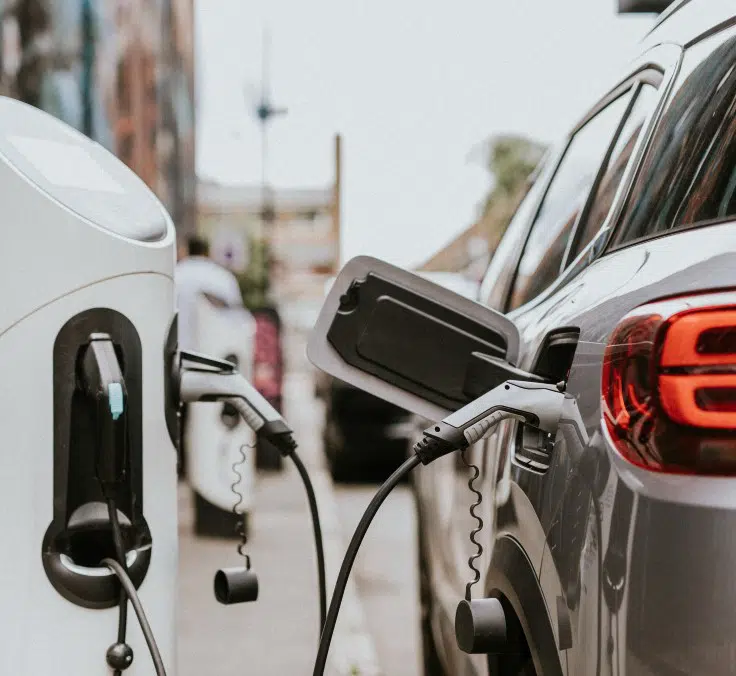SUSTAINABILITY| 15.06.2022
New trends driving electric vehicle purchases
The climate emergency is leading toward a transition to a fairer and more sustainable energy model for our common way of life. At MAPFRE we are playing our part by joining our entire value chain in the movement for alternative mobility based on renewable energies and low carbon emissions.
A few months ago we told you in this article everything you needed to know before switching to electric vehicles electric vehicles. Today, in line with this theme, we will tell you about the trends that are driving the purchase of these vehicles and what is expected of this sector in 2022.
Sales of electric vehicles have been growing year after year ever since the focus has been on the need to seek out less polluting alternatives to the combustion vehicles we were used to until very recently. It is no longer unusual to see them in big cities and on the roads, and it will become less and less so because the climate emergency demands it and because the industry is beginning to offer attractive models.
What factors are influencing the purchase of electric vehicles?
- They help slow climate change
Topping the list of factors is that of pollution reduction, because they do not emit greenhouse gases (GHG), thus reducing the environmental impact of this mode of transport and contributing to combating climate change.
- Average fuel consumption and expense
Another factor that may lead one to opt for an electric vehicle is the lower cost compared to one with a combustion engine. With the combustion engines, assuming an average consumption of 6 liters/100km and a price of 1.50 euros per liter, average consumption would be 9 euros per 100 kilometers, which would be under two euros. This fact, together with the rise in fuel prices, may speed up the rollout of these vehicles.
- The range of electric vehicles
One of the big questions when buying an electric car is the range. Currently, the most common models on the market offer batteries with a range of 200 to 450 kilometers. This allows us to this allows us to comfortably make our daily commute in the city, but it can be more inconvenient for those who want to make longer trips.
In the next few years we expect substantial advances in battery technology, with improvements in their capacities and thus their range. It may take some time for these to be incorporated into vehicles on sale, but improvement initiatives are on the rise at most manufacturers. We are talking, for example, about Our Next Energy and its “dual battery” that would allow a range of 1,200 km, or sodium batteries that could be an alternative to lithium batteries. There are also others who are betting on the speed of recharging, such as Desten, whose recharging project would allow recharging in less than 5 minutes, with a power of 900 kW. There are many companies around the world with different lines of research, and we will continue to see advances throughout 2022.
In fact, this year, in the city of Girona, the first ultra-fast electro-lane has been built. Its location is not accidental, since it is a strategic location very near the border with France. This network of high-speed service stations will be set up to lead this transition for the goods transport sector as well.
- Availability and variety of supply
Another factor to be added to the list is the availability and variety in the supply of electric vehicles on the market. It matters little that the their features are improved if the customer finds a limited range of models, which is not the case with the range of diesel and gasoline models on offer. But this is something that is changing and will drive the purchase of electric vehicles, as most brands have already announced their commitment to further increase their fleet. In fact, in 2018 there were only 28 electric models, but last year in Europe there were already 74 models to choose from, and this number is expected to increase even more in 2022.
- PriceA key factor in deciding whether to opt for these vehicles is their price. It doesn’t matter if our trusted brand comes out with five or ten electric models if we can’t afford it. Although there are government subsidies, which we will discuss in more detail in one of the following points, electric vehicles must start to become more competitive economically in the short term. Bloomberg analysts point out that starting in 2025 electric vehicles will be priced the same, and that by 2030 they will be even cheaper than diesel and gasoline.
Another point that has to do with the price of these is the cost of the recharging points. So far some of them were free, but many of them are no longer free, such as those in Barcelona. It is likely that in order to prevent these points from being used as parking spaces there will be different cost brackets for recharging. For example, the first few hours will be cheaper or free, and then the price will rise progressively.
This point has a lot to do with rising electricity prices, which were constant last year and are a cause for concern this year. Further, night rates and the possibility of contracting two power ratings for different time periods might be very appealing to electric vehicle users. So this could be one of the advantages of the electric car in the long run, if we take into account that fuel prices, as we mentioned earlier, have been rising.
Public aid for the purchase of electric vehicles
The trend in electric car sales also depends to a large extent on the aid provided by the various European governments for the purchase of zero-emission vehicles. In Spain, was seen in the approval, in April last year, of Royal Decree 266/2021 granting aid to the autonomous communities for the implementation of incentives programs linked to electric mobility (MOVES III Plan) within the framework of the European Recovery, Transformation and Resilience Plan, which has a budget of 400 million euros. This budget is aimed at the purchase of electric vehicles, with grants of up to €7,000 for the purchase of a new electric vehicle, the scrapping a used one and the rollout of recharging infrastructure for these vehicles. In addition, in Spain, electric vehicles are also exempt from paying registration tax and receive a discount on road tax (in the case of Madrid and Barcelona, 75%).
In Europe, there is no better example than Norway to see the positive effect that public policies to accelerate the transition can have, where buyers of electric vehicles are exempt from paying VAT (25%) on new or used electric vehicles. The country that offers the highest subsidy for the purchase of electric vehicles in Europe is Estonia where the government contributes up to 50% of the vehicle price.
Laws and restrictions on polluting mobility
According to the latest report by the European Federation for Transport and Environment (T&E), European regulations on sustainable mobility have led to an increase in sales of plug-in vehicles. In addition to laws such as the low emission zones which we have already discussed elsewhere, some countries are making bigger commitments. An example of this is also Norway, which, in a few years, could become the first country in the world where combustion cars will no longer be sold, as they plan to ban these cars in 2025.
Electric vehicle sales facts and figures
2021 was the fastest growing year for the electric car globally. According to data from Jato Dynamics, global sales of electric cars came to 4.2 million units, 108% more than in 2020 and 198% compared to 2019.
The past year has also seen Europe consolidate its position as the world’s second largest market in terms of electric car sales. It is only surpassed by China, where electric vehicles accounted for a market share of 12.3%. According to the China Association of Automobile Manufacturers, electric car sales in 2021 increased 2.6 times over the previous year, with 2.91 million units sold.
These figures are the result of the efforts of the major manufacturers to increase their offer of electric vehicles and, with this, the arrival of more economical models, which opens up the range of potential customers.
As we mentioned in our last article on electric vehicles, MAPFRE is a witness to this change of direction. In Spain alone, the company’s new insurance policies of electric cars increased by 150% compared to last year; in the case of plug-in hybrids, this figure almost multiplied by five.
According to the International Energy Agency, there will be 145 million electric cars in the world by 2030, a very high figure given that there were only 8.5 million in 2020, but that is still a small share of the total number of cars.
Although there are countries that are advancing faster, Norway being a clear example, in most countries the pace will be slow, as is the case in Latin America. Although some countries, such as Costa Rica, Colombia and Chile, are making great efforts, the lack of infrastructure and economic resources mean a later scenario.
In the first quarter of 2022, electric vehicle sales in Europe as a whole came to 325,285 units. So what is the meaning of this figure? According to data from the European Automobile Manufacturers Association (ACEA), this represents an increase of 60.8% compared to the same period in 2021. If we continue at this rate, 2022 will be second record year for this sector. A sector that is clearly expanding and is shaping up to be the one that will prevail in the future if we want to promote more sustainable mobility and contribute to a healthier planet.
RELATED ARTICLES:




